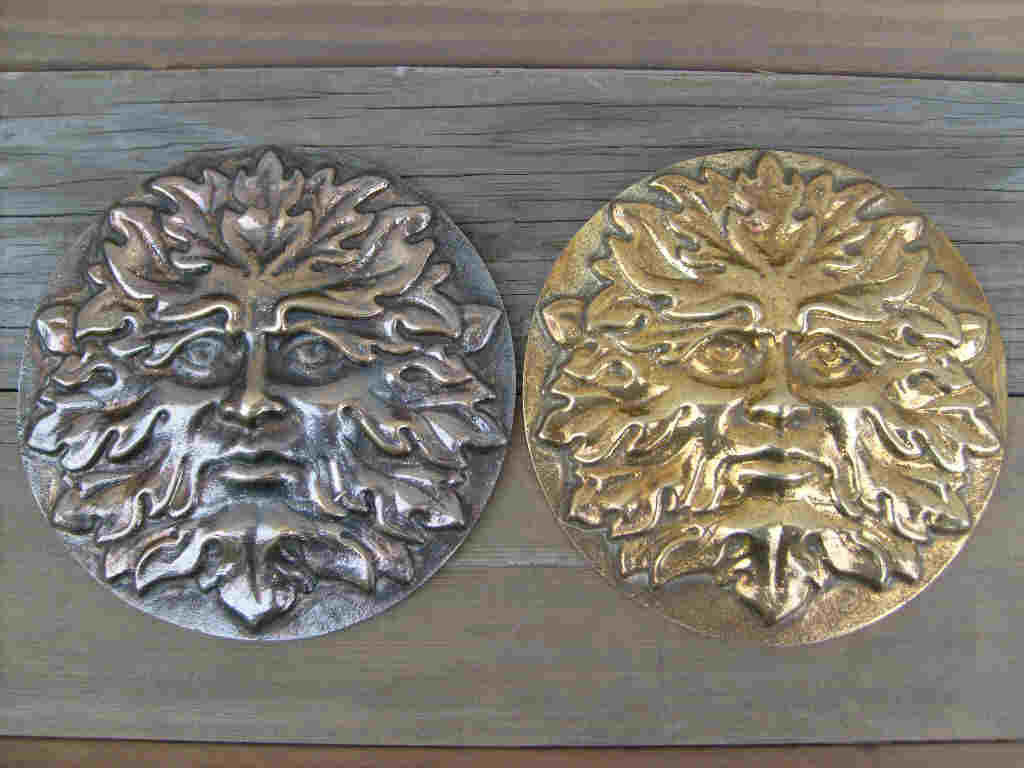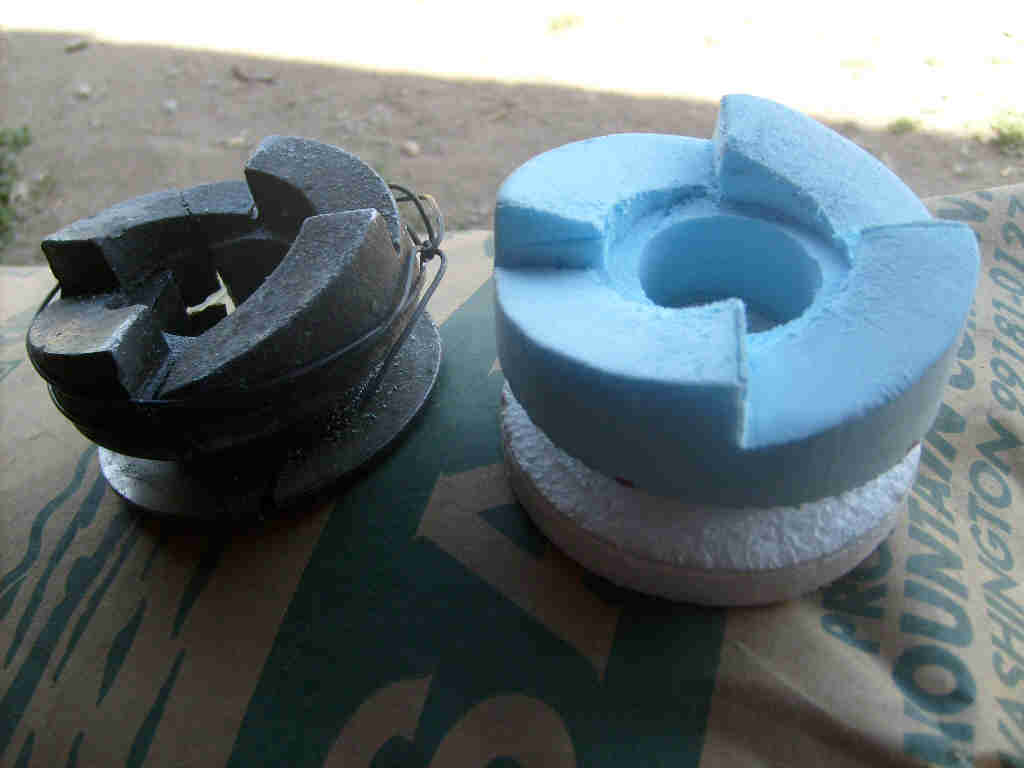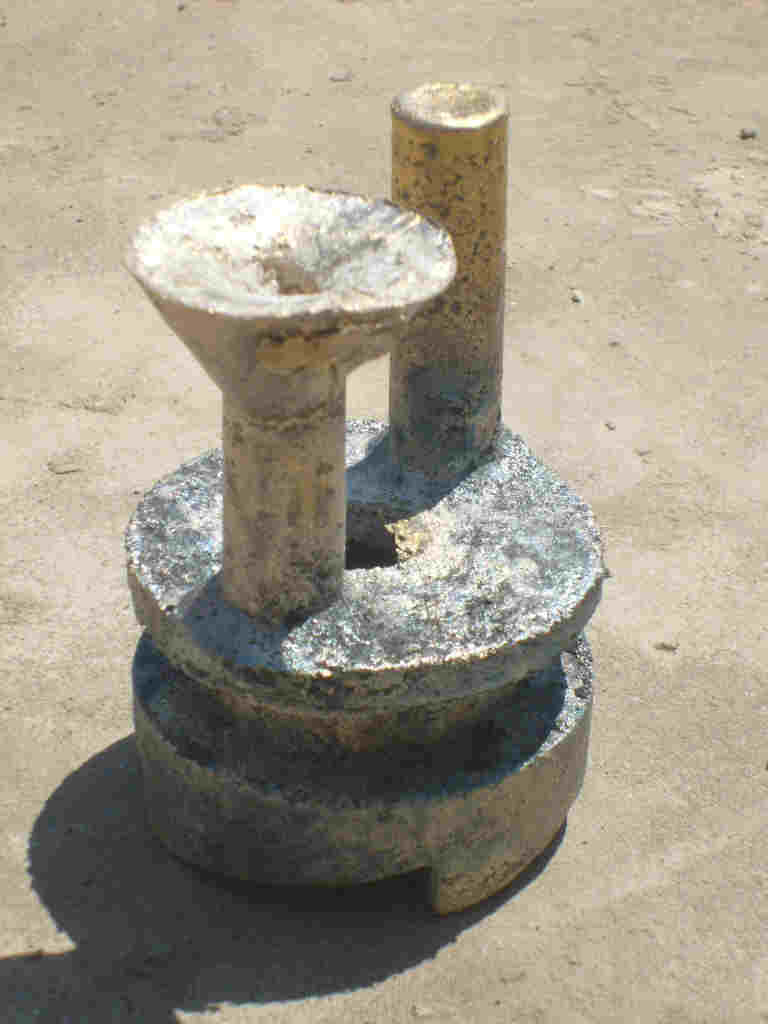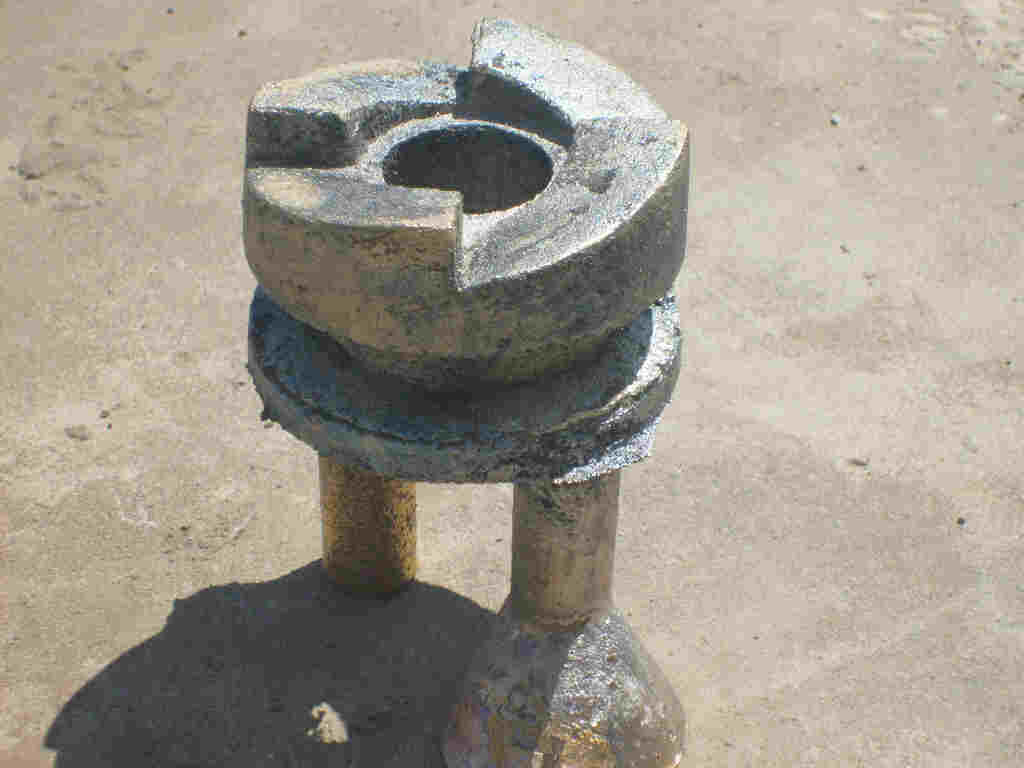Foundry sand is called “greensand”, because of the slight moisture content.
A combination of sand, clay and water.
education
Molding
Greensand molds with gating system.

Gating iron (Latin: ferrous) is different than gating aluminum or bronze (non-ferrous). Dross is produced with non-ferrous alloys , but NOT with iron. Dross is similar to the foam on top of beer.
When gating non-ferrous castings, dross is carried beyond the gate by the deep runner, clean metal enters the casting.
When gating iron, the metal is so heavy, 2 large openings (sprue/riser) are used to equalize the pressure.
Parameters of Gating
Alum castings 3lbs. or less- Bronze castings 9lbs or less
1/2″ sprue, 1″x 1″ runner up to 10″ long.
Alum castings 3-8 lbs.- Bronze 9-24 lbs.
3/4″ sprue, 1.5″x 1.5″ runner up to 14″ long.
Alum castings over 8 lbs. Bronze over 24 lbs.
1″ sprue, 2″x 2″ runner up to 18″ long.
Gallery

Recyclers call it “red-brass”(bronze) or “yellow-brass”(brass).
Patterns
A casting is a copy of your “pattern”. Sand is packed around the pattern and carefully removed. A slight draft is necessary on vertical surfaces (sides), like the way “stacking cups” work. Patterns can be made of wood, plastic or metal. Wood patterns should be sealed to prevent moisture being robbed from the sand. Shellac or paint work well.
When making a pattern, increase size 2% for shrink and a % for machining, depending on finish.
Apprentice Test

This casting is a symbol of achievement and excellence in the foundry industry. This test of molding skill originated many years ago in the British Isles. Foundrymen there considered molding an art. An apprentice had to spend many years learning and practicing the trade before becoming a Journeyman.
Continue reading “Apprentice Test”Experimenting with Aluminum and Wood
Writing in wood with molten metal? We cut our name into a pine board and poured molten aluminum into it.
Continue reading “Experimenting with Aluminum and Wood”Flasks
Many projects require a special size of flask, making them yourself is a necessity.
Continue reading “Flasks”Foundry Background
After 40 years in the foundry, I have learned and practiced the Four elements of casting. Patterns, molding, melting and finishing. They work together to make a good casting. There are two types of sand foundries, ferrous (iron) and non-ferrous (aluminum, brass, etc.)
Continue reading “Foundry Background”Tattoo Frame

Lost Foam

1. Use the pink or blue high density foam insulation or white bead foam. Carve into shapes and lightly glue together with wood glue.

2. Pack pattern into the drag section of the mold. Stack flasks if you need more depth.

3. Flip mold and ram cope. Remove cope and make two 3/4″ sprue holes directly over the pattern. One pouring hole and the other to release stinky gas. DO NOT make the sprue holes with foam, they must be empty when pouring.

4. Pour mold outside! Throw crunchy sand away, reuse moist sand.

